Why Your Characters Need Story-Worthy Goals

Have you ever been told by an agent or editor, reviewer, critique partner, or reader that your writing was blah because your main character’s goal wasn't strong enough, that it wasn’t ‘story-worthy?’
What does ‘story-worthy’ even mean?
In the post below, Why Your Characters Need Story-Worthy Goals, we will discuss what makes a goal story-worthy so that you can write engaging stories that hold your reader’s attention from beginning to end.
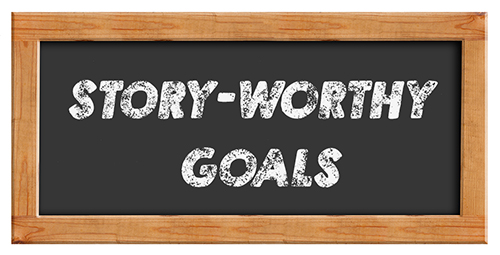
When I was first starting out, I was told that my main character of my story needed a goal. So, I would give him or her a random goal like ‘she dreamed of being a ballerina’ or ‘he wanted to be a photographer.’
But I did not understand that this should not be just any goal. I did not know that the character’s story-driving goal should tie in with the antagonist’s plans against him and the other events that would consequentially unfold.
I did not understand that a character may have personal goals, desires, dreams, and wishes, but that he formulates a ‘story-worthy’ goal after the antagonist launches that first attack against him, rocking his world, and presenting him with a devastating problem the main character must solve.
I did not know that it is the plan to resolve this devastating problem that becomes the ‘story-worthy’ goal.
If you, too, have struggled with goal setting for your characters, just know that you are not alone.
Let’s dig deeper and go over the exact factors that make a character’s goal ‘story worthy.’
1) The main character makes a goal in response to the inciting incident, the antagonist’s first attack against him.
What is an inciting incident?
The story opens with your main character living in their ordinary world, and he/she may be dealing with a small problem or pursuing a personal goal when all of the sudden, out of the blue, (usually in the 2nd or 3rd chapter of a book) an antagonist appears and does something to turn your main character’s world upside down.
The antagonist is someone who creates intense opposition for your main character throughout the story. Just like the Wicked Witch of the West in The Wizard of Oz by L. Frank Baum.
The antagonist may be a true villain or could simply be a family member, friend, or just another character with an equally valid opposing view. Perhaps two people want the same piece of land, or two guys want to win the heart of the same girl.
The antagonist could also be a force of nature like a volcano threatening to erupt, like in the movie, Dante’s Peak.
Other examples: In the movies Armageddon, Volcano, and Twister, the antagonist presenting the main character with a problem that must be solved is not human but a force of nature that takes on antagonistic characteristics.
Nature can present a deadly initial story problem and then as the main character takes action to defeat this problem, the force of nature delivers smaller counter blows that the character must also deal with each step of the way. The problems the character encounters force him to interact with others and grow and change in some way by the story’s end.
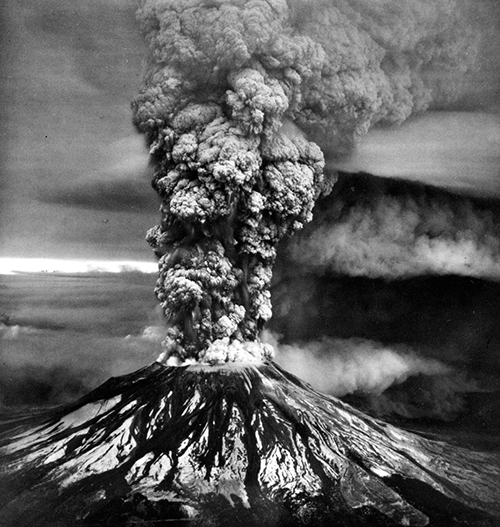
2) A story-worthy goal is a plan of action, that the main character hopes will solve the problem the antagonist presented.
This antagonist steps into your main character’s life and creates a threat to their ordinary way of living. The main character must deal with this dreaded challenge or threat if he/she is ever to feel comfortable again. They cannot ignore the problem the antagonist presents – it will not go away on its own. The main character must make a DECISION on how to deal with it. The main character must CREATE A PLAN, a ‘STORY-WORTHY GOAL’ to overcome this problem, to resolve this potentially life-altering crisis. It must be a plan that requires the main character to take ACTION.
3) A story-worthy goal will encourage the antagonist to try to stop the main character’s moves with countermoves of his own.
The antagonist must also have a goal as strong as the main character’s if he is to be a worthy foe. This means the antagonist must have compelling motivation or valid reasons for opposing the main character, and he will have a specific plan of action to thwart the main character’s attempts to overcome the problem each step of the way. The antagonist also has a lot to lose if he does not win. The stakes must be high for each side.

How will the main character respond to this? What will he decide to do? How will he plan to overcome the problem?
The main character will create a story-worthy goal. It should be a S.M.A.R.T. goal.
(Specific, Measurable – one that takes several steps to complete, Action-oriented, Realistic or Relevant to the problem at hand, and Timebound – it has a deadline to be completed, a ticking clock.)
“I would like to be self-sufficient,” or “I would like to find love and start a family someday” are not S.M.A.R.T. goals. They are vague desires without a real plan of action, measurable steps, or a deadline. “I will not let the villain stop me” is not a real goal, either. No, the main character has to decide upon a plan of action that is detailed and specific. How does this character intend to fight against the antagonist? What will he do?
4) A story-worthy goal will be challenging, not easy.
5) A story-worthy goal will require several action-oriented steps.
6) A goal that will take the main character the entire story to achieve.
This story-worthy goal will take the entire book to achieve but there are several steps or parts to it. The character can’t just do one thing and then expect boom! It’s done. Think about dominos – there must be several things that directly line up – not random things but things that directly relate – to achieve this goal. The character may have to incrementally learn a new skill or follow a map to different locations.
7) A story-worthy goal takes the main character out of his comfort zone, tests his strengths and weaknesses, and may require him to develop new skills or gain new insights to learn and grow.
Let’s look at the individual components of the S.M.A.R.T. goal acronym:
S—It is a very specific goal. The character will do this________.
M—It is measurable. This means that like a to-do list, you can cross off each step toward the goal once it is done. You have to be able to see how you are moving forward and measure the success in increments.
A—It is actionable. The character himself must take concrete action to achieve this goal and not leave it to fate or to others. The goal is broken down into measurable steps and the character strives to achieve each one.
R—It is relatable or relevant. Does the chosen goal have to do with defeating the villain? If not, it is not relevant. It has to relate to the main threat at hand. Some people also say the R must stand for ‘realistic.’ Is this goal really achievable or too far-fetched?
T—Timebound. It has a time limit. Some people say the difference between a goal and a wish is a deadline. Your character’s story-worthy goal must have a deadline. It cannot be ‘someday’ or ‘as soon as I can.’ No, it needs a specific date where the reader knows the character either achieves the goal by that date or they do not.
8) A goal the main character must achieve by a certain deadline, or he will face dire consequences.
As the days pass, the tension builds as it gets closer to that date. Later in the story you may also place some other ‘ticking time bombs’ that the character did not expect to further ramp up the tension. There will be serious consequences if the goal is not met. Not achieving the goal should be unfathomable.
Does your main character’s story-worthy goal matter? It should if you want the reader to care. A compelling story-worthy goal makes for a compelling book.
9) A story-worthy goal is compelling enough to make the story worthy of the reader’s time.
10) A story-worthy goal acts as your story premise, the overall plot in one sentence, your hook line for editors and agents.
One of the main reasons books fail, is because the central character did not have a strong enough story-worthy goal. The character’s story-worthy goal becomes the premise of the book – it tells us in a nutshell (just one sentence) what the story is about.
Because this character’s goal is the foundation of your book, make sure his goal is strong enough before you sit down and write 400 pages. If the character’s goal is weak, your story will be weak. Test your premise out on others and ask for some feedback before you write your beginning chapters.
Look at your story one line hook / story premise and see if you can answer all of these symbolic letters in the Smart Goal acronym. Do you?
A (adjective, and profession or character identifier) MUST do (this)_______________ (which we can see will take several steps) to defeat the (villain/antagonist) _________ threatening to (do what?)_____________ by (what date?)_____________ or (this will happen)_____________________________.
To help create a story-worthy premise you can download our Free Brainstorming Your Story Idea Worksheet.
Now let’s summarize:
What is a ‘story-worthy’ goal?
A goal the main character makes in response to the inciting incident. The antagonist has just stepped into this character’s world and presented the main character with a major obstacle or problem that the main character must resolve, or his life will never be the same.
The main character creates a game plan, a plan of action, a goal that takes him the whole story to achieve, (thus story-worthy) which he hopes will allow him to overcome this problem and defeat the antagonist’s plans against him. This plan will not be easy because as he takes each step forward, the antagonist will counter-attack like in a game of chess. Every time he makes a move, so does the antagonist, in a back-and-forth motion.
If the antagonist only attacked once at the beginning of the story and did nothing else but sit back and let the character figure things out, it wouldn’t be nearly as exciting. No, we want active characters in the story who continue to take action all the way through.
By action, I mean take steps to solve the problem or present opposition/conflict for the other character. In some stories, the character is confined to one room or small space the entire book and it is the psychological conflict through dialogue with moves and counter-moves that drives the story forward.
Which brings up another point – a story-worthy goal is not only a goal set in response to the antagonist’s attack against him, but the goal must also serve to drive the story forward. The goal must be big enough, complicated enough that it can be broken down into smaller steps. It cannot be just one action step but several like climbing up the rungs of a ladder.
Many beginning writers will have the character wrestling with what to do, talking to this person and that person for the majority of the book and then have the character take one action to face the antagonist and solve their problem at the end. This doesn’t make for a very compelling story because we need to see the character take actions that will allow him to learn and grow along the way to solving his dilemma.
We need to see the character struggle, perhaps even fail a few times in order to “earn” his book-ending triumph, prove he is worthy of a favorable outcome and that he deserves to accomplish his goal. The antagonist’s actions set him on a journey to change and grow so that he is a better person in some way at the end of the book. He can now do something at the end of the story that he could not do at the beginning.
Maybe by the end of the story your main character’s initial beliefs have changed, maybe their values. Perhaps by the end of the story their habits have changed due to the enlightenment the character received while on his story journey. It is the antagonist and the problem he presents that sets the character on this journey and instigates this change.
The reader has also gone on this journey with the character. Was the journey worth it? Worth reading about? A story-worthy goal ensures your story will be worth your reader’s valuable time.
I know this is a lot of information, so let’s simplify with a quick list:
What is a ‘story-worthy’ goal?
- A goal the main character creates in response to the inciting incident, the antagonist’s first attack against him.
- A goal, or plan of action, that the main character hopes will solve the problem the antagonist presented.
- A goal the main character must achieve by a certain deadline, or he will face dire consequences.
- A goal that will be challenging, not easy.
- A goal that will require several action-oriented steps.
- A goal that will take the main character the entire story to achieve.
- A goal that will encourage the antagonist to try to stop the main character’s moves with countermoves of his own.
- A goal that takes the main character out of his comfort zone, tests his strengths and weaknesses, and may require him to develop new skills or gain new insights to learn and grow.
- A goal that acts as your story premise, the overall plot in one sentence.
- A goal that is compelling enough to make the story worthy of the reader’s time.
I hope you have enjoyed Why Your Characters Need Story-Worthy Goals. Remember, you can download our Free Brainstorming Your Story Idea Worksheet, with specific story examples and fill-in-the-blank templates to help you create a story your reader’s will love.
Do you find it difficult to create compelling antagonists and villains for your stories? Do your villains feel cartoonish and unbelievable? Do they lack motivation or a specific game plan? Discover the secrets to crafting villains that will stick with your readers long after they finish your story, with our How to Create Antagonists & Villains Workbook.
This 32-page instructional workbook is packed with valuable fill-in-the-blank templates and practical advice to help you create memorable and effective antagonists and villains. Whether you're a seasoned writer or just starting out, this workbook will take your writing to the next level.
If you have any questions or would like to leave a comment below, we would love to hear from you!
Our Goal for Aspiring Writer Academy is to help people learn how to write quality fiction, teach them to publish and promote their work, and to give them the necessary tools to pursue a writing career.

ENTER YOUR EMAIL BELOW
TO GET YOUR FREE
"Brainstorming Your Story Idea Worksheet"
7 easy fill-in-the-blank pages,
+ 2 bonus pages filled with additional story examples.
A valuable tool to develop story plots again and again.
Other Blog Posts You May Like
3 Levels of Goal Setting for Fiction Writers
Fiction Writing: How to Write a Back Cover Blurb that Sells
How to Captivate Your Readers with Scene-Ending Hooks
Scene & Sequel: The Secret to Plotting an Epic Novel
Scene & Sequel: The Secret to Plotting an Epic Novel (Part 2)
Writing Fiction: How to Develop Your Story Premise
12 Quick Tips to Write Dazzling Dialogue
10 Questions to Ask When Creating Characters for Your Story
Macro Edits: Looking at Your Story as a Whole
Basic Story Structure: How to Plot in 6 Steps

is a multi-published author, speaker, and writing coach. She writes sweet contemporary, inspirational, and historical romance and loves teaching aspiring writers how to write quality fiction. Read her inspiring story of how she published her first book and launched a successful writing career.

























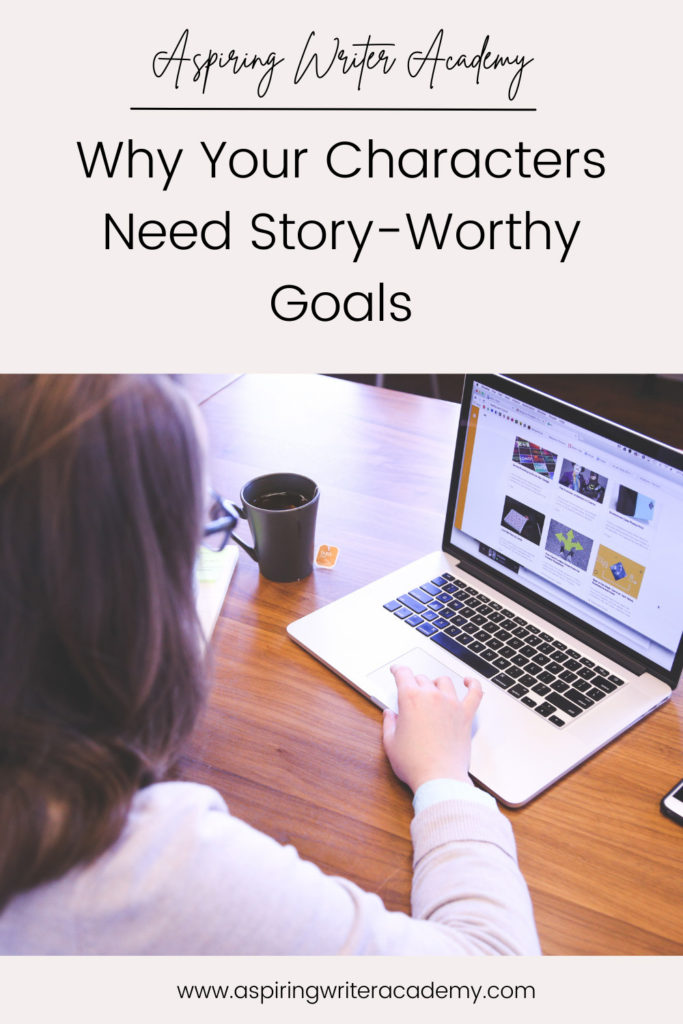
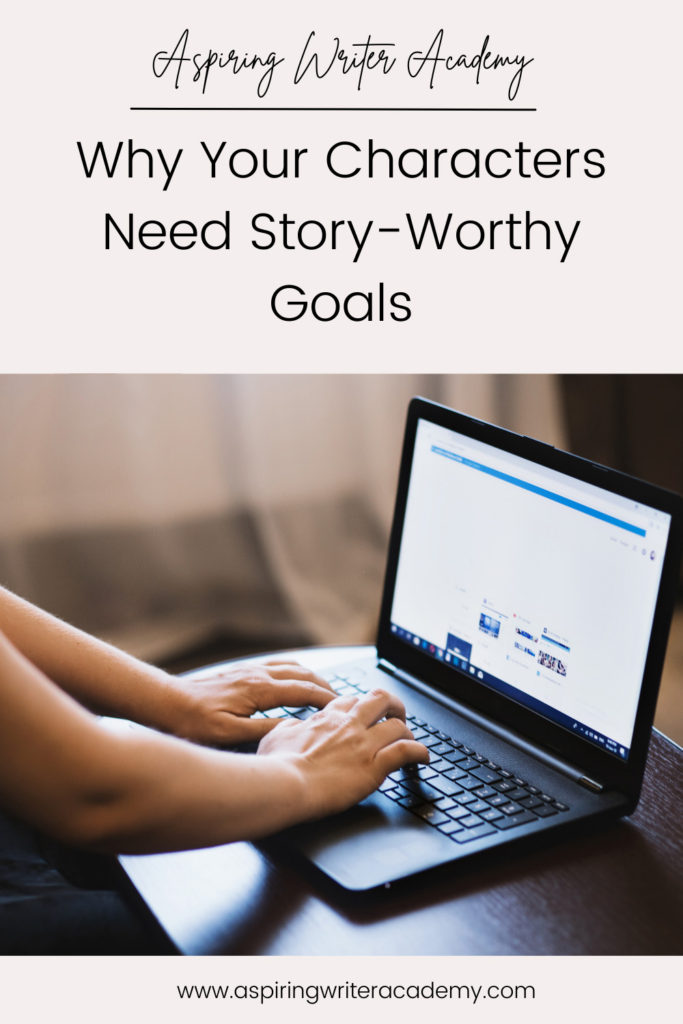

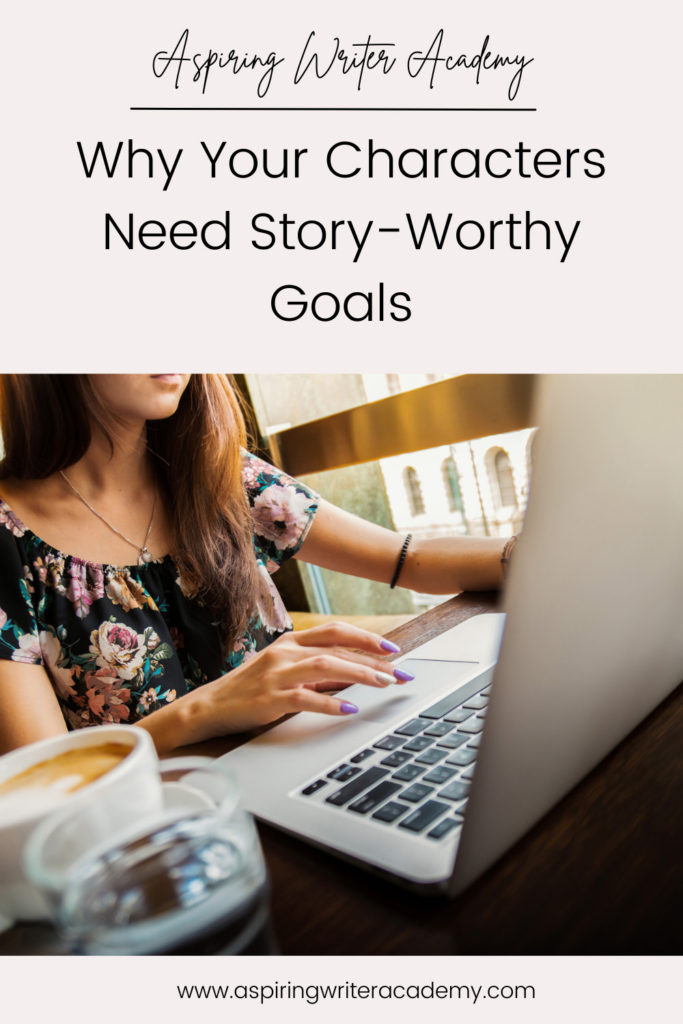
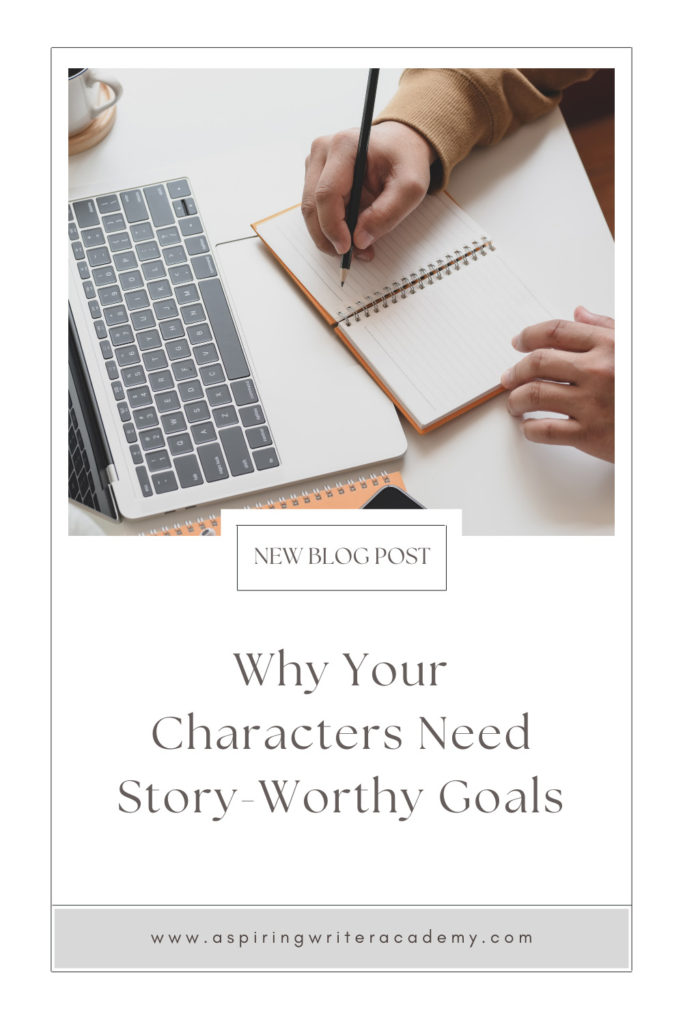
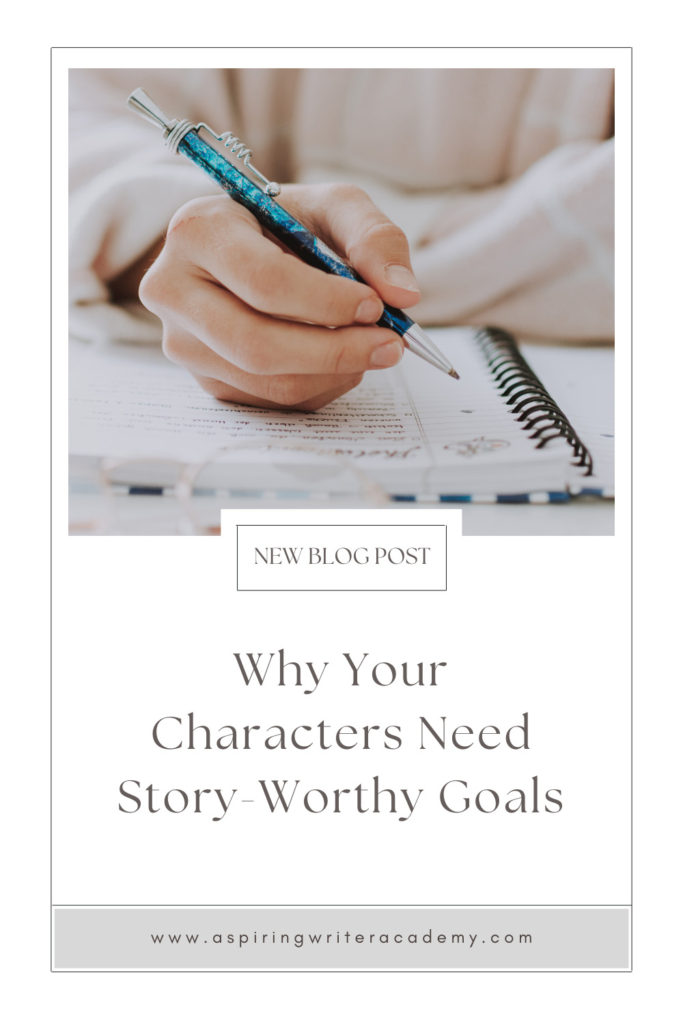

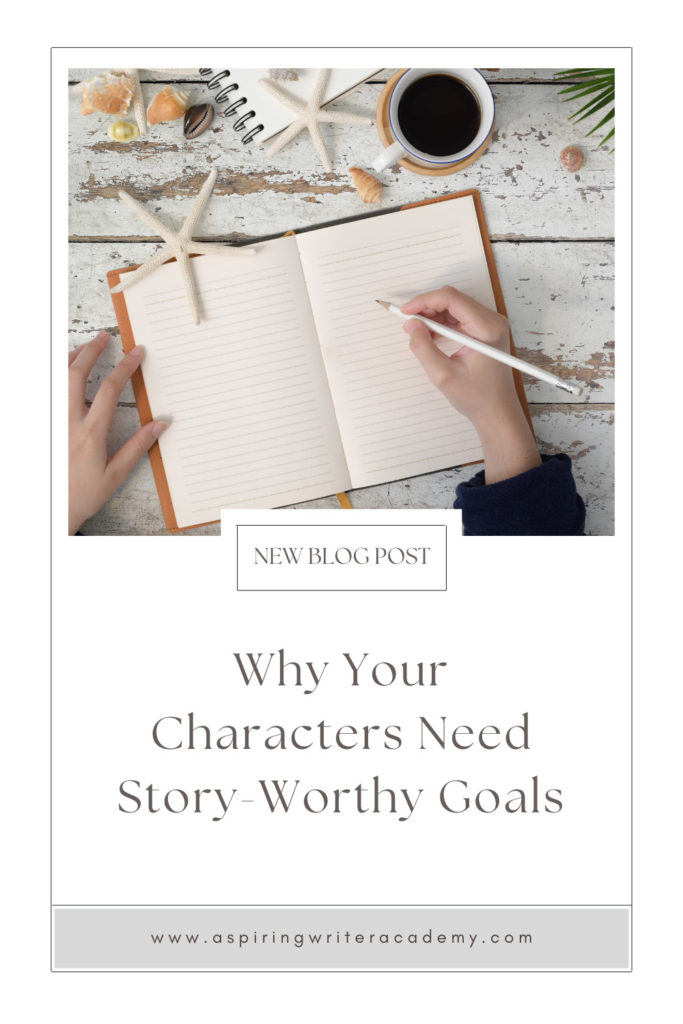














![Twister [Blu-ray] by Warner Home Video](https://m.media-amazon.com/images/I/51D4UqPRfLL._SL500_.jpg)











